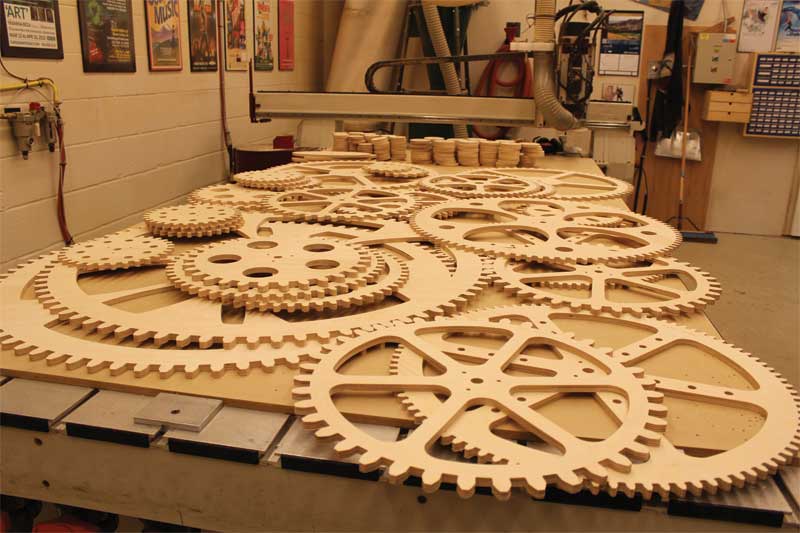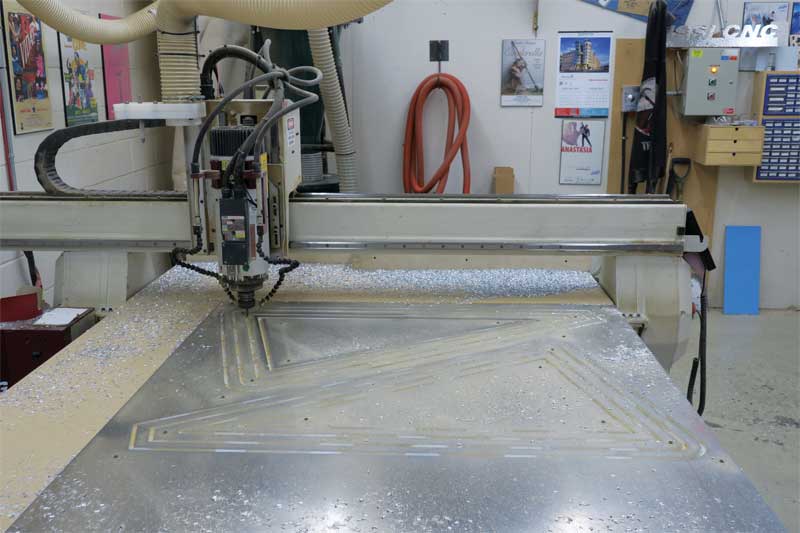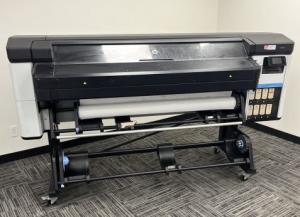How to choose the right bits


Speed vs. finish
Some projects need to be completed as quickly as possible. For others, the smoothness of the cuts is the top priority.
As such, the type of bit to be used at a specific stage of processing will depend largely on whether speed or accuracy is the most important consideration. Upcut end-mill bits, for example, are ideal for quick, straight cuts and deeper holes where chip evacuation is key, but can negatively affect the quality of the finish by fraying fibres. Ball-nose bits will achieve the best results when carving intricately detailed designs; they are used for two- and three-dimensional (2-D and 3-D) profiling and carving of wood, aluminum and plastics
and their rounded edges are designed to cut smooth contours.
The speed of a cutting feed will vary, depending on a few factors, including the following:
- The horsepower of the spindle.
- The strength of the clamps or vacuum table holding the panels down.
- The overall stability of the CNC router.
- The condition of the collet (i.e. the band around the spindle).
Cutting at a high rate right from the start can make it difficult to gauge the optimal speed. Instead, it is preferable to initially cut the material at a lower rate and then gradually increase the speed and feed, all the way up until the point where the quality of the finish starts to become unacceptable.
Speed factors into determining the correct diameter and size for the bit, through the context of its ‘chip load.’ This is a measurement of the amount of material removed by each cutting edge during CNC routing. Chip load can be only be calculated if the user knows the router’s feed rate—i.e. how fast a material will move through the machine, commonly measured in inches per minute—along with the bit’s speed in terms of revolutions per minute (RPM) and its number of flutes.
The formula for this calculation is as follows:
chip load = feed rate / (RPM x number of flutes)
It is important to keep in mind chips that are too large can break the router bit, while chips that are too small can turn waste into powder and dull the bit. So, it is very worthwhile to choose the right diameter and size of bit based on the chip load, as those factors will in turn affect the size of the chips.
That said, since the calculation of chip load is only based on an average thickness of material for a given cutting tool, it is just a starting point. So too are the tool vendor’s recommended settings. Ultimately, it is up to the machine operator to establish the proper settings for the sign shop’s applications, which will involve a process of trial and error.
As for the finish, the more flutes on the bit, generally, the higher the quality of the cut. Users can choose from one-, two-, three- and four-edged flutes on their CNC routing bits. The two- and three-flute bits may suffice when the quality of the finish is important, while the four-flute bits will provide the highest level of detail in their cuts. Ball-nose bits are an excellent option for designs that involve intricate components.
V bits are great for signmaking in general. They can cut decorative letters and grooves and may be used with an edge guide to chamfer and bevel (i.e. slope) the sides of a material. They are relatively inexpensive and can cut aluminum composite materials (ACMs), medium-density fibreboard (MDF), high-density urethane (HDU) foam boards, metals and fabrics.



